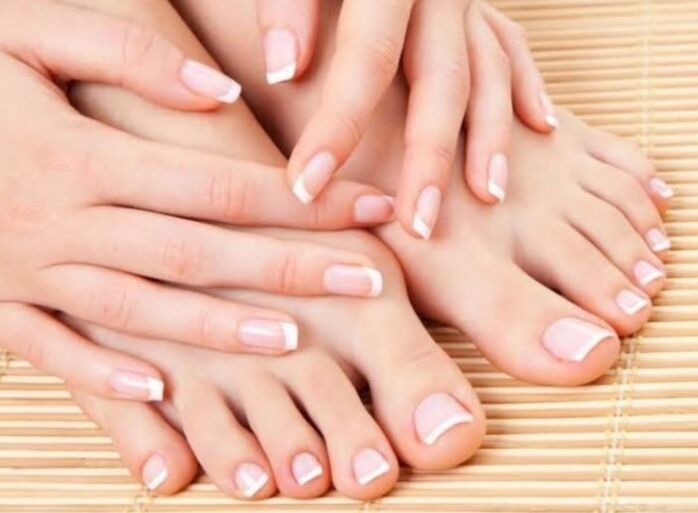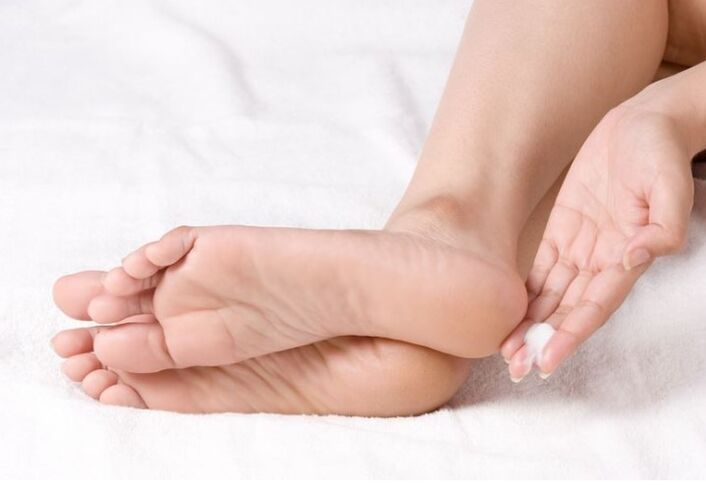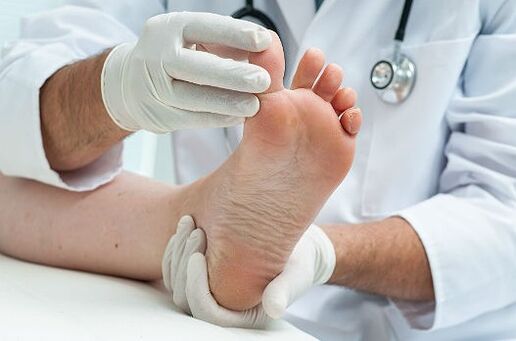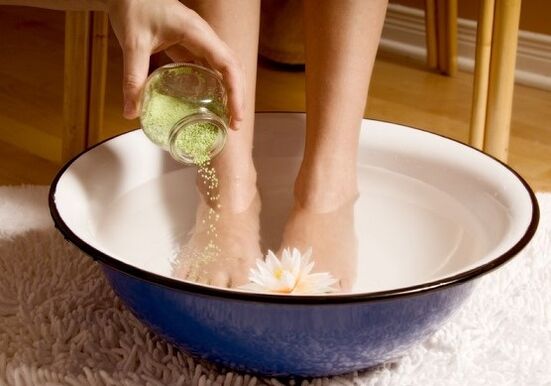Fungal lesions of skin and nail plates are the most common dermatological diseases, according to the statistical data of the World Health Association. They offer a large amount of inconvenience to a person, shout their family life, violate the usual biorithm. The treatment of the fungus is long and expensive. Therefore, previous diagnoses are made, faster you can start treatment, preventing the development of complications.

What is a fungus on the legs?
The skin fungus of the legs and nails is an infectious disease that affects the upper layer of the feet epidermis and fingertips of the toes. Onychomycosis (medical name for pathology) occurs due to skin lesions such as types of microorganisms such as mold, yeast, Candida -type mushrooms, dermatomycetes, dermatophytes. Microorganism data groups are able to live and multiply in the human body, gradually affecting healthy cells. Most of the time, fungus is found in men, as its microflora, best suited for the development of fungal infections.
In a medical classification, there are about 50 different types of fungi. Approximately 85% of fungal lesions are caused by dermatomycetes. Candida fungi become the cause of the disease, about 10% to 12% of cases. The remaining small percentage falls into the microorganisms of mycotic mold, which actively multiply with non -compliance with personal hygiene rules.
The intensity of propagation and the degree of progression of fungal diseases depends on many factors: a climate that promotes the reproduction of this type of bacteria; social conditions of human residence; age criterion; individual characteristics of the body; Immunity. Most of the time, people face a fungus after 50 years, since the level pH is much weaker and not able to suppress this type of microorganisms.
The reasons for the formation of the fungus in the legs
The penetration of mycotic organisms on the skin leads to the development of fungal infection. Due to the presence of proteolytic enzymes, fungi easily penetrate tissues from the epidermis' surface, and the protein structure allows them to develop actively and actively maintain in their place.
The body's immune system is able to suppress independently the pathogenic environment, but sometimes this is not enough. On the surface of the skin, it contains special bacteria that support acid-base balance. The alkaline environment is unfavorable for the development of fungal infections; Therefore, the mycelium, which falls into healthy skin, dies after a while. But there are several factors that allow fungi to get used to the skin:
- Mechanical damage to the skin (cuts, scratches, burns);
- aggressive exposure to domestic chemicals, reducing the acid-base balance of the skin (frequent intake of a shower with shampoos or gels, feet deodorants, prolonged contact with water);
- Use of long -term synthetic materials, causing active sweating (synthetic socks, barefoot shoes);
- Hyperhidrosis - Increased perspiration associated with the individual characteristics of the body;
- The anatomical characteristics of building the foot, such as boring feet or narrowed gaps between the fingers (worsens the quality of hygiene in these areas), which contributes to the low aeration of the feet;
- Very fast growth of nails, growing nails on the skin;
- Variced diseases;
- The climate characteristics of the region (moderate or cold climate, in which you need to constantly wear closed heating shoes);
- Age -related immunological and hormonal changes;
- The presence of pathologies that affect the state of the immune system (diabetes, HIV infection, obesity, dystrophy);
- Take antibiotics, cytostatic, contraceptive agents;
- Frequent use of anti -support agents (gels, napkins, special solutions for skin processing).

The penetration of the fungus on the toes of the toes occurs as follows:
- The fungus penetrates the free edge of the nail (which is cut). Thus, the development of the disease begins under its own nail, gradually deforming the free edge and spreading deeply in healthy areas. This shape of the fungus is the simplest and easily eliminated.
- It means dorsal (cuticle). This method of damage to nail plates is less common. It is characteristic only for dermatomycetov. The dorsal defeat implies rapid destruction of the nail plate as soon as possible.
- By damage to the proximal roll. This is the rarest and most severe form of nail fungus. The disease leads to the destruction of the nail phalanx's own structure. If you do not start treatment on time, you may lose your nail forever, as it will not be able to grow again. The use of ointments, gels and liquids in this form of fungus is absolutely ineffective.
In a large risk group, people who usually visit public places are found: sports clubs, public showers, swimming pools, beaches with water bodies, saunas or baths. In addition, people who purchase shoes and clothes or change with friends or acquaintances are at risk.

Symptoms of fungus of the feet and nails on the legs
The symptoms and the course of the disease depend mainly on the type of microorganisms that caused this disease. Another factor is the age than the elderly, the more pronounced symptoms will be, and the damage process to the skin and nail is significantly accelerated.
Despite the individual course of the disease, regarding the type of bacteria and body characteristics, there are general symptoms by which you can recognize a fungal infection:
- In the presence of a fungus in the skin of the legs, the compaction of tissues occurs, especially in the phalanx of the fingers. As a rule, the skin illuminates, dries, begins to peel. Peeling is accompanied by unpleasant itching. The foreshadowing of nail plates injury is the inflammation of the almost unpleasant roll. The fungus that affects the skin of the nail roll is accompanied by an inflammatory process. When pressed on the skin, a person feels pain, there is discomfort when wearing closed shoes.
- If these are nails, symptoms appear gradually. First, you can notice small changes in nail color, it becomes more muddy and is covered with a white mist. If the cause of the fungus becomes dermatomycetes, it begins to be divided. In addition, the color of nail plates occurs, they become more yellow, after which they begin to compress. After sealing, nail deformation occurs, nail talk starts to rotate, the nail starts to color gradually.
In the process of developing the disease, a person feels a little pain and itching, there is a desire to scratch under a nail. Also, for the fungus of the skin, a characteristic unpleasant sour smell, which is very tangible in a tight and closed space.
Treatment of skin fungus and nails on the legs
The treatment of skin plates and nails is significantly different. Therefore, the presence of both types of fungus involves complex therapy. For the treatment of skin fungus, ointments, gels or creams are used more often:
- Sulfuric ointment. It destroys the protein membranes of the fungi, preventing their reproduction. The ointment relieves perfectly itching and eliminates inflammation.
- Zinc ointment. It is often used in the skin fungal treatment complex, accelerating the process of healing wounds.
- Salicilic ointment. This tool is effective for all types of skin fungi. The course of treatment is only 2 weeks.

For the treatment of more severe ways of fungal infections caused by mycetic molds, use medications to carry in. The essence of this treatment is based on two principles:
- Destroy the fungus in the active development phase.
- Stop the growth of pathogenic microflora.
Before starting treatment, you should go through all the necessary medical studies and determine the type of microorganisms that caused the fungus. Only based on these data can the doctor prescribe effective treatment.
Prevention and treatment of fungi in legs with folk remedies
As already mentioned, the formation of a fungus on the skin of the feet and leg nails is associated with the fall of the natural level of the alkaline balance Ph5. 5. It is the alkaline balance that prevents the development of pathogenic microflora. Therefore, the treatment of fungus with folk remedies, with the aim of increasing the acid-base balance of the skin. Effective home methods of home struggle fungi can be attributed to the following:
- An alkaline bath. In three liters of warm water, dissolve a tablespoon of common stone salt (even better iodized) and bastard soda. Immerse yourself in such a leg solution, having cleared the skin previously and holds for 15 minutes.
- Bath based on vinegar and iodine. Add to a basin of warm water, half a glass of table vinegar and 10 drops of iodine. Lower your legs for 15 minutes. In the absence of time, you can simply moisten two cotton swabs in vinegar and clean each foot with your nails. If the skin has fungal infection outbreaks, they should be lubricated with iodine so that the fungus does not spread.
- Lemon juice. Squeeze the juice of a lemon and add a pinch of salt. Moisten a cotton cotton swab in the juice and treat all affected areas of the skin as well as nails. Repeat the procedure three times a day.

Such procedures will serve as an excellent fungal prevention for people who carry an active lifestyle, visiting sports complexes, swimming pools. For preventive purposes, one procedure per week is sufficient. For the treatment of simple forms of fungal infection, therapy is performed daily for a week. Even though these methods do not help eliminate the fungus, they will be able to slow down the development of pathogenic microorganisms to their visit to the dermatologist.
























